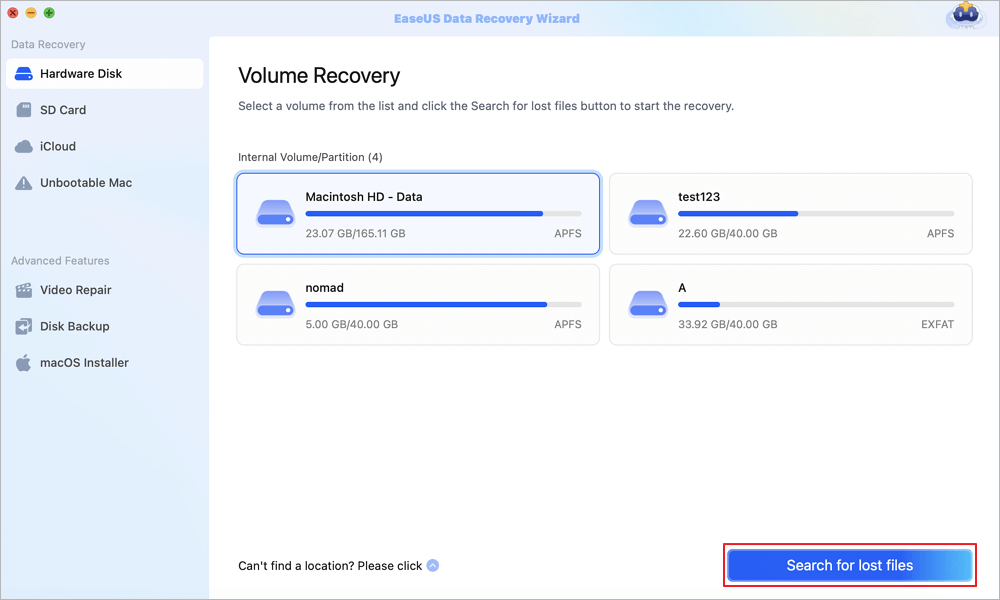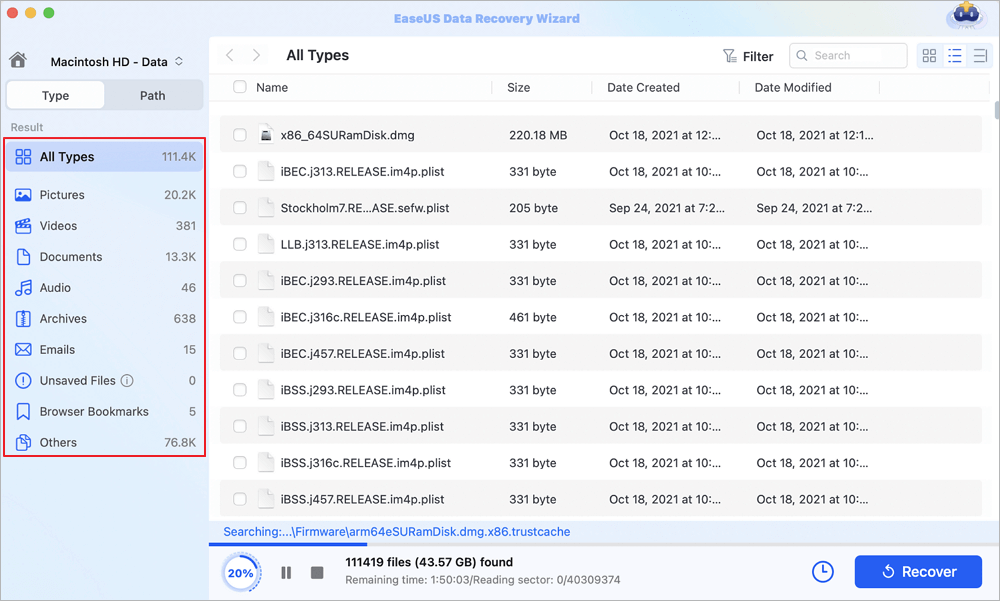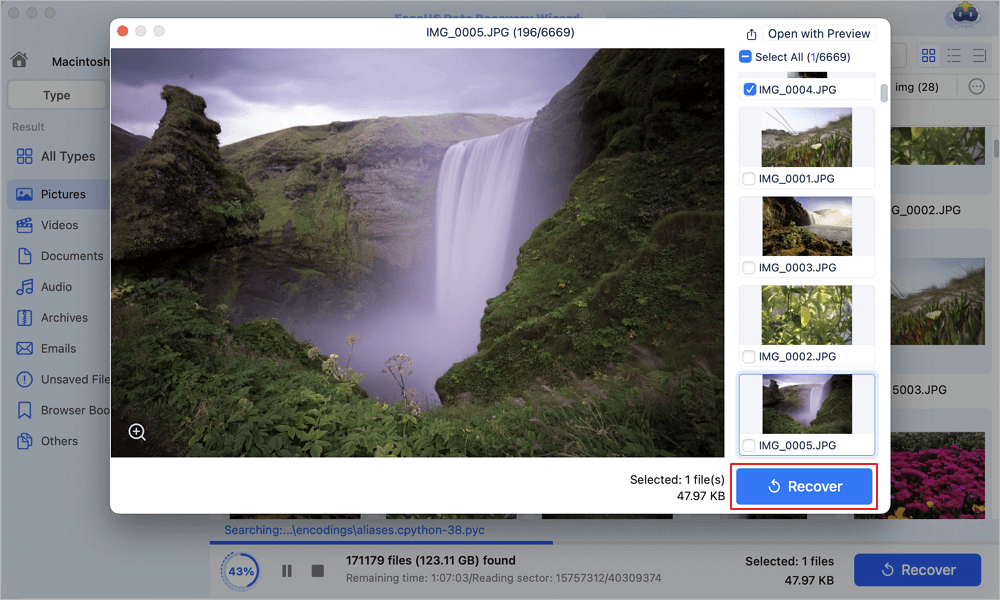Page Navigation:
- Delete Files Using the RM Command
- Can You Recover RM Command Deleted Files
- Steps to Recover Deleted Files After Using RM Command on Mac
- How to Use RM Command on Mac Safely
Delete Files Using the RM Command
RM or RM - R command is used in Mac Terminal to delete files permanently. When you can’t empty the Trash, or a file is locked, you don't have permission to delete one or more files. This sort of glitch is annoying, but you can use these command lines to provide an easy solution. However, deleting files with the RM or RM - R command is dangerously easy.
For example, if you had a file here named MyFile.rtf that you never, ever wanted to see again, you could run this command:
rm MyFile.rtf
If you want to delete a directory full of archives containing sub-directories and files, run the command like this:
rm -R Archives
The RM command is dangerous because once you delete a file through this command, you cannot restore the data from Trash. Unlike when you move files to the Trash from the Finder, the deleted files are not saved in the Mac Trash. Therefore, it is advised to keep a backup before using the RM command. You can turn on Time Machine or use data backup software for mac to keep these data safe.
Can You Recover RM Command Deleted Files
What if you don't have backups and want to get RM deleted files back? How can you recover these lost files easily?
RM command deleted files case:
"Yesterday, when I tried to clean up the trash on my Mac, I found there is a stubborn file that is difficult to remove. So I used rm - R command to do it. It removes the stubborn file from my trash successfully. But at the same time, the command line also erased all desktop files. Is it possible to recover files deleted by rm on Mac? If yes, how to do it?"
It is possible for you to recover deleted files on Mac after using rm command because when you delete files or folders using the RM command, the content of the files or folders is not permanently erased.
- The system only removes the link to the file, making it unable to be found or accessed without special tools.
- Space (these files occupy) is marked as free space and can be used for new files or for additional content added to existing files. You'd better stop using the disk in order to prevent your deleted files from being overwritten.
So, you can easily get back the deleted files on Mac if you use a reliable Mac data recovery software.
Steps to Recover Deleted Files After Using RM Command on Mac
EaseUS Mac drive recovery is rated as one of the best software for Mac data recovery. It is a reliable file recovery program that works well in Mac file undelete. It has a comprehensive set of functions that allow data recovery from critical data loss scenarios.
- Recover all lost, deleted, and formatted data.
- Recover permanently deleted files on Mac.
- Recover data from lost Mac volumes/partitions.
- Recover lost data related to OS X or macOS updates, system crashes, power failure, or virus infection.
By using EaseUS Data Recovery Wizard for Mac, the files deleted accidentally by the RM command can be restored with simple steps. Now you can learn the detailed guide about how to do the undelete job.
Step 1. Scan for deleted files
Select the hard drive, external drive, or SSD where your important data & files were deleted and click "Search for lost files".

Step 2. Filter the lost files
The software will run quick and deep scans and work hard to find as many deleted files as possible on the selected volume. Filter wanted files through the "Type" and "Path" options.

Step 3. Recover deleted files
Double-click the deleted files to preview. Then, click the "Recover" button to get them back.

How to Use RM Command on Mac Safely
Although the RM is easy to use, using it properly and safely becomes important. There are some tips to use this command safely:
1. Use the - i flag for protection.
For example, rm - iR Archives. This will ask you to confirm the deletion of each item. This can be annoying, but unless you’re really sure you want to delete all those files, it’s probably best to be safe.
2. Don't use it unless you really don’t need the file(s) anymore.
3. Back up Data Regularly
Was This Page Helpful?
Cedric Grantham is a senior editor and data recovery specialist of EaseUS. He mainly writes articles and how-to tips about data recovery on PC and Mac. He has handled 10,000+ data recovery cases and is good at data recovery of NTFS, FAT (FAT32 and ExFAT) file systems, and RAID structure reorganization.
Written by Tracy King
Tracy became a member of the EaseUS content team in 2013. Being a technical writer for over 10 years, she is enthusiastic about sharing tips to assist readers in resolving complex issues in disk management, file transfer, PC & Mac performance optimization, etc., like an expert.
-
EaseUS Data Recovery Wizard is a powerful system recovery software, designed to enable you to recover files you’ve deleted accidentally, potentially lost to malware or an entire hard drive partition.
Read More -
EaseUS Data Recovery Wizard is the best we have seen. It's far from perfect, partly because today's advanced disk technology makes data-recovery more difficult than it was with the simpler technology of the past.
Read More -
EaseUS Data Recovery Wizard Pro has a reputation as one of the best data recovery software programs on the market. It comes with a selection of advanced features, including partition recovery, formatted drive restoration, and corrupted file repair.
Read More
Related Articles
-
How to Find External Hard Drive on Mac In Case It's Working but Not Showing Up
![author icon]() Jean/Dec 12, 2025
Jean/Dec 12, 2025 -
Mac Audio File Recovery: 3 Steps to Recover Deleted/Lost Audio Files
![author icon]() Daisy/Dec 12, 2025
Daisy/Dec 12, 2025 -
Move to Trash Shortcut on Mac with Three Sets
![author icon]() Dany/Dec 12, 2025
Dany/Dec 12, 2025 -
How to Fix Mac Stuck on Terms and Conditions
![author icon]() Jaden/Dec 12, 2025
Jaden/Dec 12, 2025